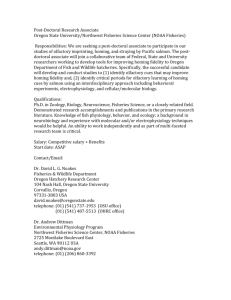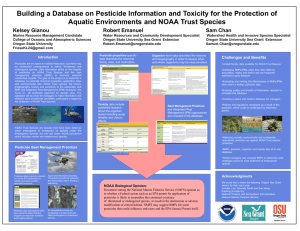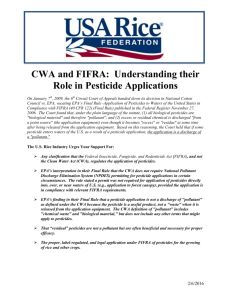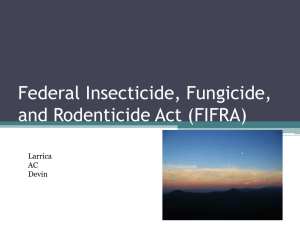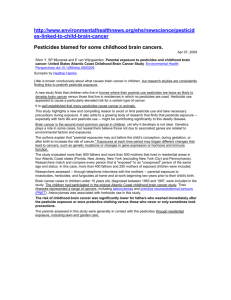BRIEFING - Oregon Wheat Grower`s League
advertisement
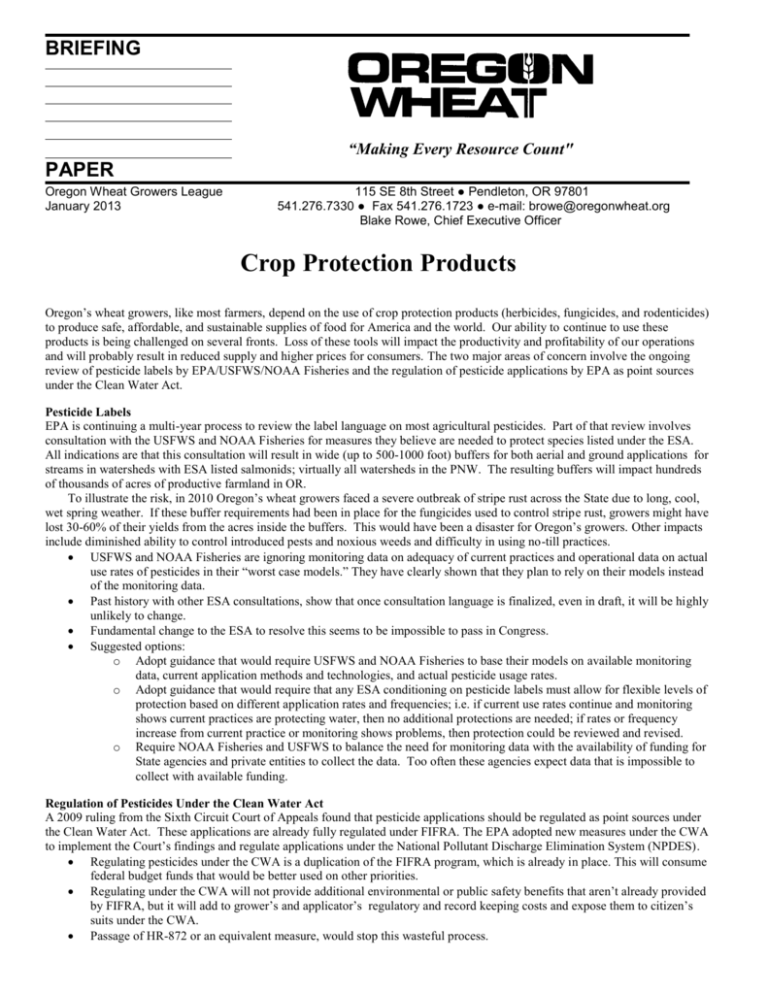
BRIEFING “Making Every Resource Count" PAPER Oregon Wheat Growers League January 2013 115 SE 8th Street ● Pendleton, OR 97801 541.276.7330 ● Fax 541.276.1723 ● e-mail: browe@oregonwheat.org Blake Rowe, Chief Executive Officer Crop Protection Products Oregon’s wheat growers, like most farmers, depend on the use of crop protection products (herbicides, fungicides, and rodenticides) to produce safe, affordable, and sustainable supplies of food for America and the world. Our ability to continue to use these products is being challenged on several fronts. Loss of these tools will impact the productivity and profitability of our operations and will probably result in reduced supply and higher prices for consumers. The two major areas of concern involve the ongoing review of pesticide labels by EPA/USFWS/NOAA Fisheries and the regulation of pesticide applications by EPA as point sources under the Clean Water Act. Pesticide Labels EPA is continuing a multi-year process to review the label language on most agricultural pesticides. Part of that review involves consultation with the USFWS and NOAA Fisheries for measures they believe are needed to protect species listed under the ESA. All indications are that this consultation will result in wide (up to 500-1000 foot) buffers for both aerial and ground applications for streams in watersheds with ESA listed salmonids; virtually all watersheds in the PNW. The resulting buffers will impact hundreds of thousands of acres of productive farmland in OR. To illustrate the risk, in 2010 Oregon’s wheat growers faced a severe outbreak of stripe rust across the State due to long, cool, wet spring weather. If these buffer requirements had been in place for the fungicides used to control stripe rust, growers might have lost 30-60% of their yields from the acres inside the buffers. This would have been a disaster for Oregon’s growers. Other impacts include diminished ability to control introduced pests and noxious weeds and difficulty in using no-till practices. USFWS and NOAA Fisheries are ignoring monitoring data on adequacy of current practices and operational data on actual use rates of pesticides in their “worst case models.” They have clearly shown that they plan to rely on their models instead of the monitoring data. Past history with other ESA consultations, show that once consultation language is finalized, even in draft, it will be highly unlikely to change. Fundamental change to the ESA to resolve this seems to be impossible to pass in Congress. Suggested options: o Adopt guidance that would require USFWS and NOAA Fisheries to base their models on available monitoring data, current application methods and technologies, and actual pesticide usage rates. o Adopt guidance that would require that any ESA conditioning on pesticide labels must allow for flexible levels of protection based on different application rates and frequencies; i.e. if current use rates continue and monitoring shows current practices are protecting water, then no additional protections are needed; if rates or frequency increase from current practice or monitoring shows problems, then protection could be reviewed and revised. o Require NOAA Fisheries and USFWS to balance the need for monitoring data with the availability of funding for State agencies and private entities to collect the data. Too often these agencies expect data that is impossible to collect with available funding. Regulation of Pesticides Under the Clean Water Act A 2009 ruling from the Sixth Circuit Court of Appeals found that pesticide applications should be regulated as point sources under the Clean Water Act. These applications are already fully regulated under FIFRA. The EPA adopted new measures under the CWA to implement the Court’s findings and regulate applications under the National Pollutant Discharge Elimination System (NPDES). Regulating pesticides under the CWA is a duplication of the FIFRA program, which is already in place. This will consume federal budget funds that would be better used on other priorities. Regulating under the CWA will not provide additional environmental or public safety benefits that aren’t already provided by FIFRA, but it will add to grower’s and applicator’s regulatory and record keeping costs and expose them to citizen’s suits under the CWA. Passage of HR-872 or an equivalent measure, would stop this wasteful process.




